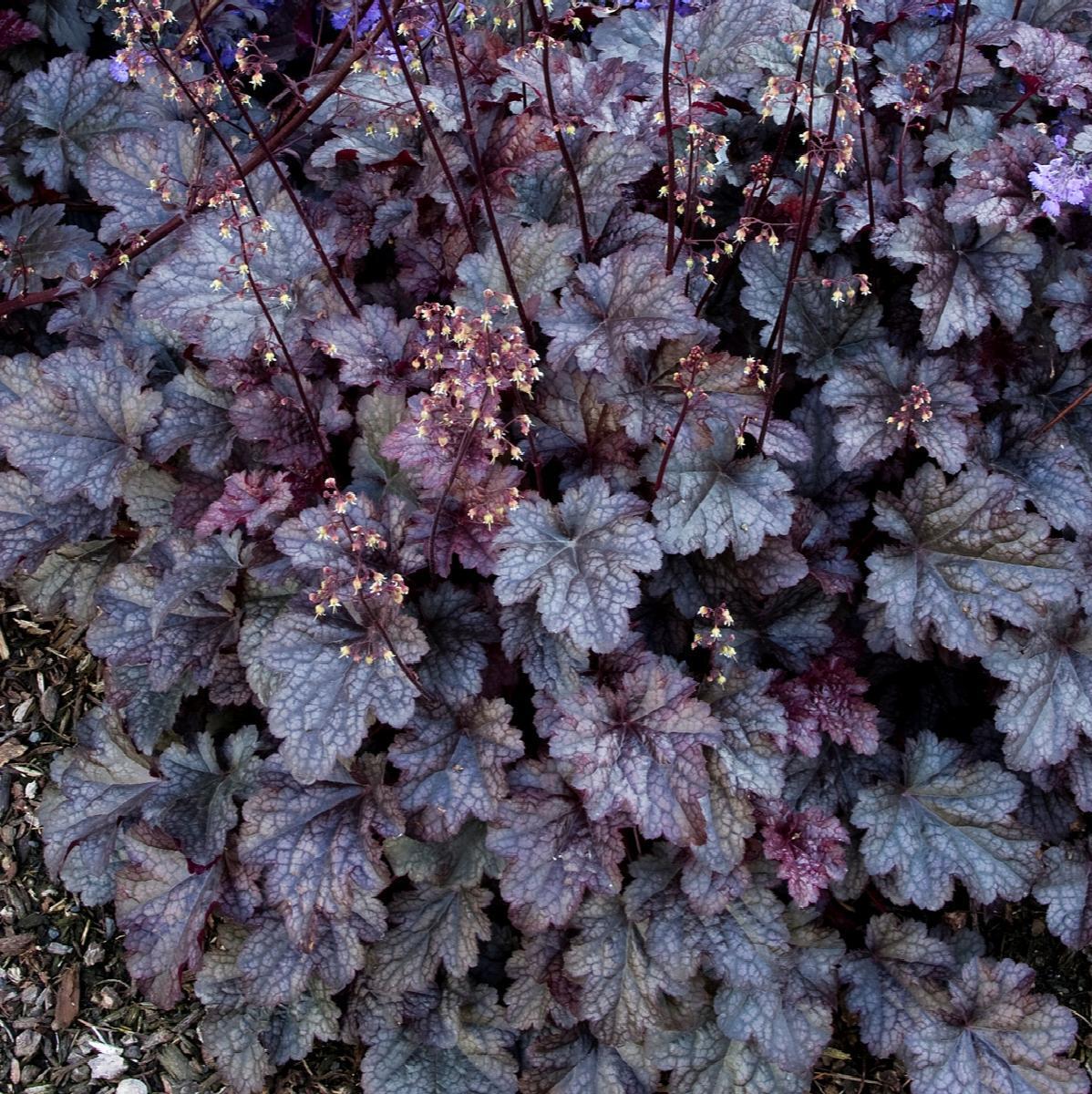

HEUCHERA 'PLUM PUDDING'~CORAL BELLS~LIVE PLANT HARDY PERENNIAL FOR SUN OR SHADE!
BUY IT NOW!!! PRICE BREAK ON QUANTITY!!!
1 PLANT * 3 PLANTS * 6 PLANTS OR 12 PLANTS
Culture
Heucheras are best grown in organically rich, humusy, medium moisture, well-drained soils in part shade. Parentage determines the best culture including optimum sun exposure. Unfortunately, the parentage of many hybrids in commerce today is unknown. Some hybrids will perform well in full sun, particularly in northern climates, but generally prefer some shade in the heat of the afternoon in southern locations. If grown in full sun, consistent moisture is very important. Scorch and general foliage decline may occur if soils are allowed to dry out. On the other hand, some hybrids perform well in shady locations, particularly if H. americana is a parent. Remove stems of faded flowers to encourage additional bloom. Foliage is essentially evergreen in warm winter climates. In cold winter climates such as St. Louis, the amount of retained foliage color in winter depends in large part upon the severity of the temperatures. A winter compost mulch applied after the ground freezes will help prevent root heaving. Divide clumps in spring every 3-4 years. Species plants may be grown from seed, but hybrids are usually divided in the garden.
Noteworthy Characteristics
Heuchera, commonly called coral bells or alumroot, is a genus consisting of about 55 species of evergreen to semi-evergreen herbaceous perennials which are all native to North America. Plants grow in a variety of different habitats including woodland areas, Appalachian seeps, prairies, rocky cliffs and alpine slopes. Plants range in size from dwarf alpine plants with flower spikes rising to only 5” tall to much larger woodland plants with flower spikes towering to 36” tall. Species plants are primarily native to the West, particularly in the Rocky Mountains, with a few species extending into northern Mexico. However, some important species are native to woodland areas in the East and Southeast.
The first significant hybrid heucheras were introduced into
commerce around 1980. Hybrids are now very common in cultivation.
Species plants most frequently used in producing the hybrids of today
are H. sanguinea, H. americana, H. micrantha, H. villosa and H. cylindrica.
Leaves of hybrid plants are available in an expanded variety of
colors including various shades of green, blue-green, violet, purple,
maroon, bronze, silver-black, orange-yellow, yellow, or red, but often
with a streaked, mottled or marbled variegation which sometimes includes
bold contrasting veins. Flowers of hybrid plants are also available in
a variety of different colors including various shades of white, pink,
coral or red.
Genus name honors Johann Heinrich von Heucher
(1677-1747), physician, botanist and medicinal plant expert at
Wittenberg University, Germany.
Common name of coral bells is in reference to the red bell-shaped flowers produced by Heuchera sanguina. Common name of alumroot is in reference to the medicinal use of some species plants as an astringent to stop bleeding.
'Plum
Pudding' is a hybrid coral bells cultivar. It is a clump-forming
perennial which features large, shiny, silvery, plum-purple leaves with
dark-purple veining and conspicuous but non-showy whitish flowers. The
rounded, lobed, long-petioled leaves form a basal mound (to 8" tall)
which may spread to 16" wide. Tiny whitish flowers borne in open, airy
panicles appear in late spring to early summer on slender wiry stems
rising well above the foliage mound (typically to 26" tall). An
introduction of Terra Nova Nurseries in Oregon.
Uses
Mass or plant in groups. Rock gardens, borders and open woodland gardens. Effective as an edger along paths or walkways.


